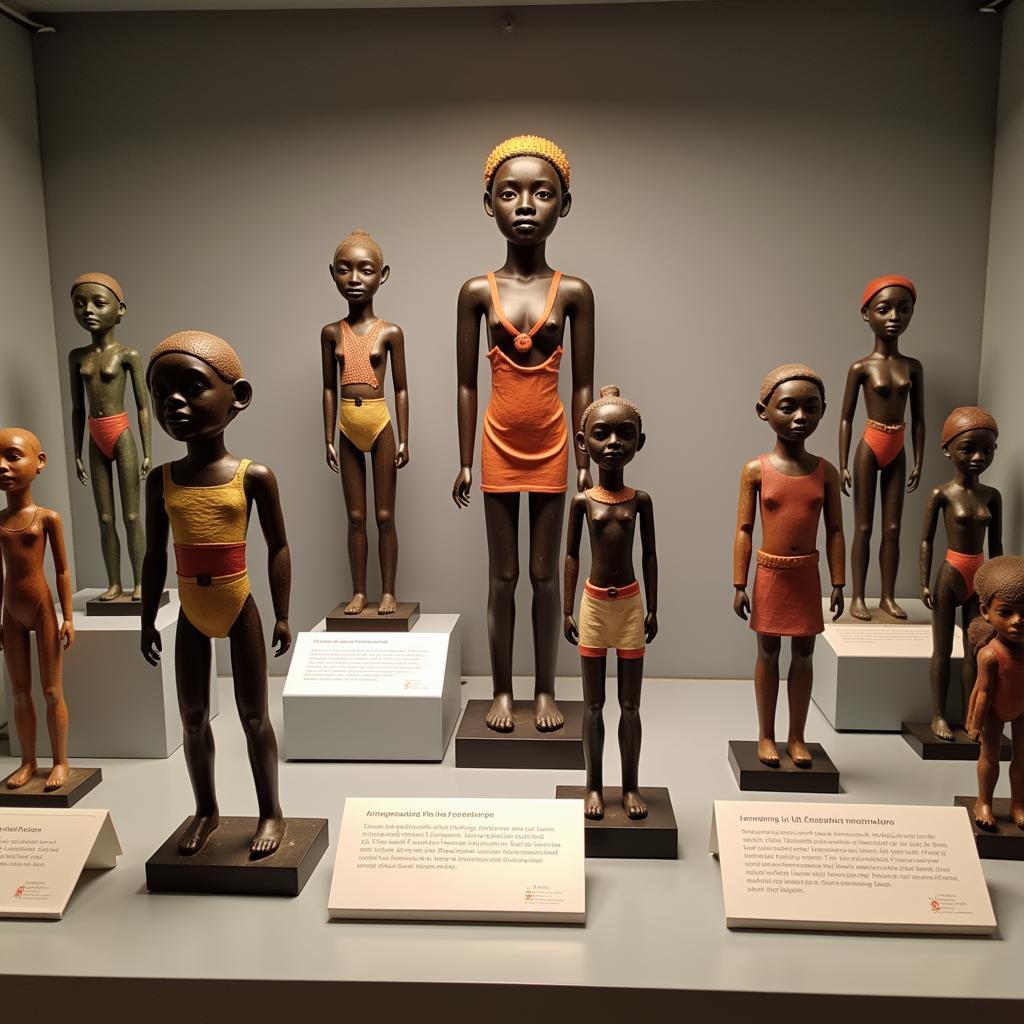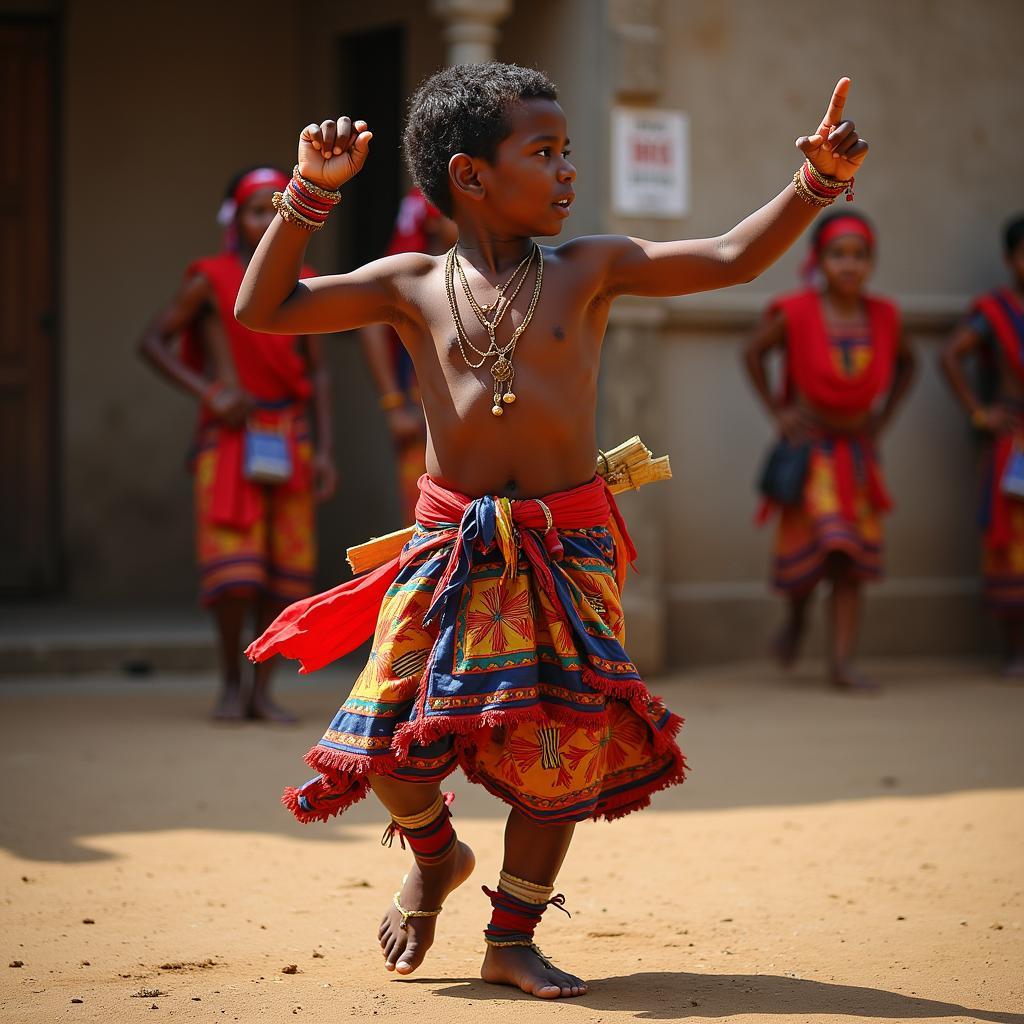Discovering the Beauty of African Ceramic Dolls
African Ceramic Dolls are more than just playthings; they are tangible expressions of rich cultural heritage, artistic skill, and societal values across the diverse continent of Africa. These dolls, crafted from clay and fired to permanence, offer a glimpse into the traditions, beliefs, and daily lives of various African communities. They serve as a powerful reminder of the artistry and creativity that thrives within these cultures.
Unveiling the History of African Ceramic Dolls
For centuries, ceramic dolls have held a significant role in African societies. They weren’t merely children’s toys, but often served ritualistic and symbolic purposes. Some were used in fertility rituals, representing hopes for healthy offspring, while others were believed to protect against evil spirits or bring good fortune. The creation of these dolls was often passed down through generations, with specific techniques and designs remaining within families or communities. This tradition ensured the continuation of cultural practices and artistic expression.
The Artistry and Symbolism of African Ceramic Dolls
The creation of African ceramic dolls is a meticulous process, often involving the use of locally sourced clay and traditional firing methods. Each doll is unique, reflecting the individual style of the artisan and the specific cultural influences of their region. From the intricate hairstyles and facial features to the elaborate clothing and jewelry, every detail tells a story. The symbolism embedded within these dolls can be profound. Certain colors, patterns, and accessories may represent social status, ancestry, or spiritual beliefs. For instance, a doll adorned with cowrie shells might symbolize wealth and prosperity, while specific geometric patterns could represent clan affiliations or protective symbols.
Exploring Regional Variations in African Ceramic Dolls
Across the vast continent of Africa, the styles and significance of ceramic dolls vary considerably. In some cultures, dolls are primarily used in children’s play, reflecting everyday life and fostering creativity. In others, they are integral to ceremonies and rituals, embodying spiritual beliefs and cultural values. For example, the Ashanti people of Ghana are known for their Akuaba dolls, characterized by their distinctive flat, disc-shaped heads and simplified forms, which represent idealized beauty and fertility. Meanwhile, the Zulu people of South Africa create dolls that often depict women in traditional attire, reflecting their social roles and cultural identity.
Where Can You Find African Ceramic Dolls?
If you’re interested in acquiring African ceramic dolls, there are several avenues to explore. Museums and art galleries often feature exhibitions of traditional African art, providing an opportunity to admire these beautiful creations.  African Ceramic Dolls in a Museum Display Specialty shops and online marketplaces offer a wider selection of dolls for purchase, allowing you to bring a piece of African culture into your home. When purchasing, it’s essential to ensure you are buying from reputable sources that respect the cultural heritage and support the artisans who create these beautiful works of art.
African Ceramic Dolls in a Museum Display Specialty shops and online marketplaces offer a wider selection of dolls for purchase, allowing you to bring a piece of African culture into your home. When purchasing, it’s essential to ensure you are buying from reputable sources that respect the cultural heritage and support the artisans who create these beautiful works of art.
“African ceramic dolls are not just objects; they are vessels of culture, carrying stories and traditions across generations.” – Dr. Amina Kone, Anthropologist specializing in African Art.
Are African Ceramic Dolls Expensive?
The price of African ceramic dolls can vary significantly depending on factors such as the doll’s size, intricacy, age, and the reputation of the artisan. While some smaller, simpler dolls may be relatively affordable, larger, more elaborate pieces, particularly antique dolls, can command higher prices.
“When you purchase an African ceramic doll, you’re not just buying an object, you’re investing in a piece of history and supporting the continuation of a rich cultural tradition.” – Baba Diop, Senegalese Artisan.
Conclusion: Appreciating the Cultural Significance of African Ceramic Dolls
African ceramic dolls represent a vibrant and enduring artistic tradition. They offer a unique window into the diverse cultures of Africa, showcasing the creativity, skill, and spiritual beliefs of their creators. Whether you’re an art collector, a history enthusiast, or simply captivated by the beauty of these dolls, exploring the world of African ceramic dolls is a rewarding journey. Remember to support ethical sourcing and appreciate the cultural significance embodied within each doll.
FAQ:
- What are African ceramic dolls made of? They are typically made from locally sourced clay.
- What is the significance of African ceramic dolls? They can have various significances, including ritualistic, symbolic, and playful purposes.
- Where can I buy authentic African ceramic dolls? Reputable museums, art galleries, specialty shops, and online marketplaces.
- How can I tell if an African ceramic doll is authentic? Researching reputable dealers and looking for signs of traditional craftsmanship can help.
- Are all African ceramic dolls the same? No, styles and significance vary across different African cultures and regions.
- How should I care for my African ceramic doll? Handle with care and keep it in a safe, dry place away from direct sunlight.
- What is the average price of an African ceramic doll? Prices vary widely depending on size, intricacy, age, and the artisan.
For further information and support, please contact us at: Phone Number: +255768904061, Email: kaka.mag@gmail.com, or visit us at: Mbarali DC Mawindi, Kangaga, Tanzania. We have a 24/7 customer service team.

